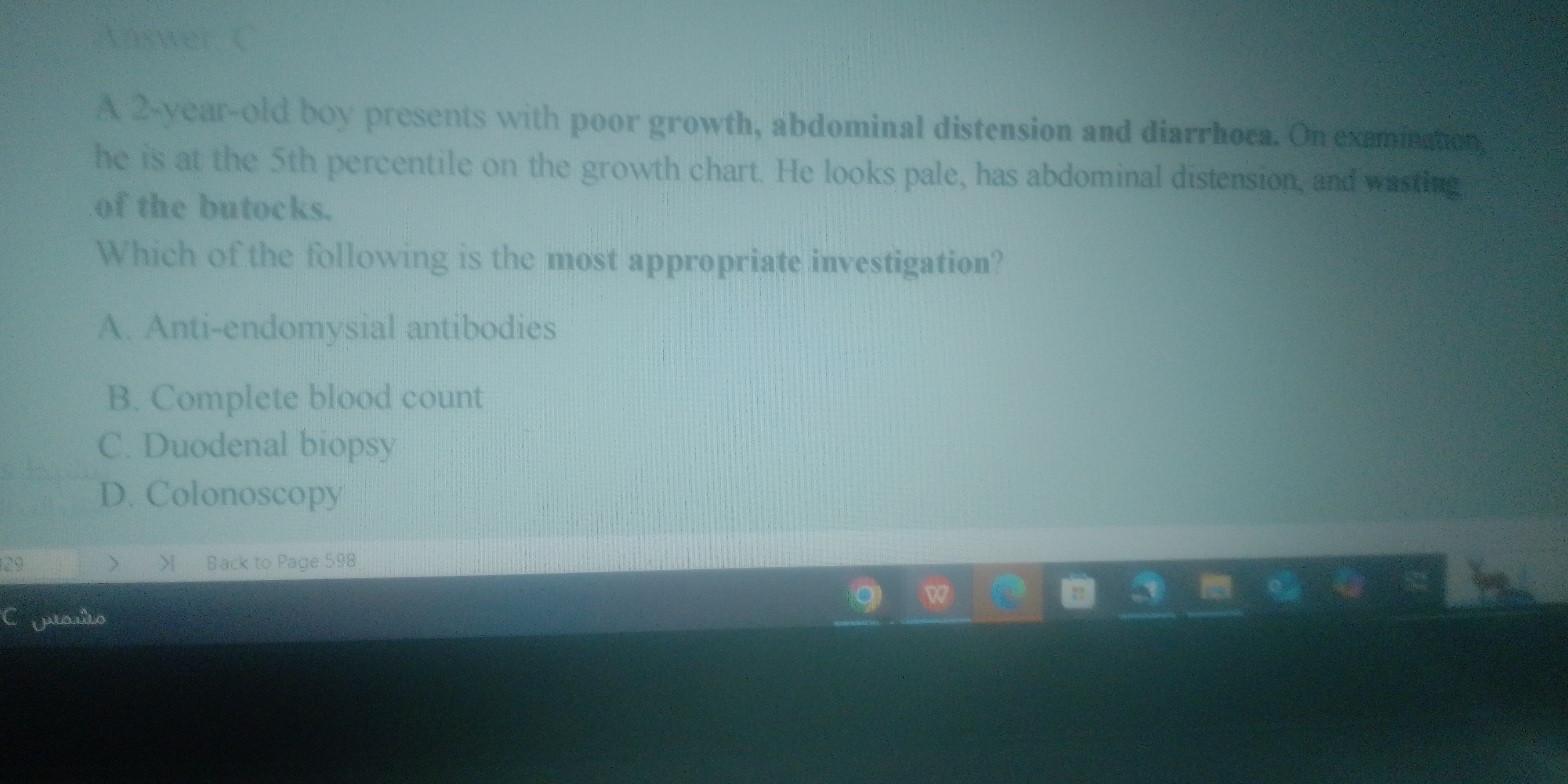A 2-year-old boy presents with poor growth, abdominal distension and diarrhoea. On examination, he is at the 5th percentile on the growth chart. He looks pale, has abdominal disten... A 2-year-old boy presents with poor growth, abdominal distension and diarrhoea. On examination, he is at the 5th percentile on the growth chart. He looks pale, has abdominal distension, and wasting of the buttocks. Which of the following is the most appropriate investigation? A. Anti-endomysial antibodies B. Complete blood count C. Duodenal biopsy D. Colonoscopy

Understand the Problem
The question describes a 2-year-old boy with symptoms including poor growth, abdominal distension, diarrhea, paleness, and wasting of the buttocks. The goal is to determine the most appropriate initial diagnostic investigation to identify the underlying cause of these symptoms.
Answer
C. Duodenal biopsy
The most appropriate investigation is duodenal biopsy. Therefore, the answer is C.
Answer for screen readers
The most appropriate investigation is duodenal biopsy. Therefore, the answer is C.
More Information
The patient's symptoms (poor growth, abdominal distension, diarrhea, pallor, and wasting of the buttocks) suggest a malabsorption issue. Given the age of the child, celiac disease is a strong possibility. A duodenal biopsy is the gold standard for diagnosing celiac disease.
Tips
It is important to consider the age of the patient and the most common causes of malabsorption in that age group. Celiac disease is more common than other malabsorption disorders in young children.
AI-generated content may contain errors. Please verify critical information